The MIDOG 2025 submission on the final test set does require a link to a preprint by the participants, detailing the method they submitted in a scientific paper format. Expect this to be like a short paper, and we encourage the classical paper format (Abstract, Introduction, Methods, Results, Discussion, References).
For this, we have some recommendations:
- The minimum size of this paper is 2 pages, IEEE double column format. We provide a template here: https://github.com/DeepPathology/MIDOG_LaTeX_Template
- As an example on how such a paper could look like, we provide the preprint for the 2021 MIDOG baseline method by Frauke Wilm et al., please have a look here: https://arxiv.org/pdf/2108.11269v1
- If you participate in both tracks, it might make sense to have individual preprints due to the limited space. However, it is not mandatory, and you can also choose to describe both approaches in a single preprint.
- It is required to provide the link to your preprint on a public repository, such as arXiv, bioRxiv, or zenodo, and not use a private repository like cloud storage (google drive, etc).
- We encourage to use a real preprint server (arxiv, bioxriv, …) and not zenodo, as these are indexed much better and the preprints will be a lot more visible there.
- It is absolutely acceptable to have updated versions of the paper on arxiv, if you want to submit an initial version early and then provide an update later. We also recommend to update the preprint with the final metrics, once these are known.
- Please be concise but detail important machine learning pipeline details, such as:
- Implementation details: Describe the architecture used (e.g., backbone network, detection/segmentation head, ensemble strategies) and mention any relevant modifications compared to standard implementations.
- Training protocol: Report the number of epochs, learning rate schedules, optimizers, batch sizes, and any early stopping or regularization strategies applied.
- Evaluation protocol: Clearly state the metrics used for validation and model selection (e.g., F1-score, mAP, Dice coefficient) and describe how these metrics were computed on your validation data.
- External data usage: If external data was used (in addition to the MIDOG training set), please state this explicitly, including the source, size, and purpose of that data. Please note that rules apply to the use of external data.
- Reproducibility: Provide sufficient details (hyperparameters, seed fixing, preprocessing steps) to allow others to reproduce your results. You might want to check our recent paper in Veterinary Pathology for a comprehensive list of things to consider.
- For citing the MIDOG 2025 challenge, please use the official (peer reviewed) structured challenge design description:
Ammeling, J., Aubreville, M., Banerjee, S., Bertram, C. A., Breininger, K., Hirling, D., Horvath, P., Stathonikos, N., & Veta, M. (2025, March). Mitosis Domain Generalization Challenge 2025. Zenodo. https://doi.org/10.5281/zenodo.15077361 [bibtex] - If you used or take inspiration from our other works, here is a list of the proper citations:
- AMi-Br Dataset:
Bertram, C.A. et al. (2025). Histologic Dataset of Normal and Atypical Mitotic Figures on Human Breast Cancer (AMi-Br). In: Palm, C., et al. Bildverarbeitung für die Medizin 2025. BVM 2025. Informatik aktuell. Springer Vieweg, Wiesbaden. [bibtex] - MIDOG25 Atypical Dataset:
Weiss, V., Banerjee, S., Donovan, T., Conrad, T., Klopfleisch, R., Ammeling, J., Kaltenecker, C., Hirling, D., Veta, M., Stathonikos, N., Horvath, P., Breininger, K., Aubreville, M., & Bertram, C. (2025). A dataset of atypical vs normal mitoses classification for MIDOG – 2025 [Data set]. Zenodo. 10.5281/zenodo.15188326 [bibtex] - MIDOG++ Dataset:
Aubreville, M., Wilm, F., Stathonikos, N., Breininger, K., Donovan, T. A., Jabari, S., … & Bertram, C. A. (2023). A comprehensive multi-domain dataset for mitotic figure detection. Scientific data, 10(1), 484. 10.1038/s41597-023-02327-4 [bibtex] - MITOS_WSI_CMC Dataset:
Aubreville, M., Bertram, C. A., Donovan, T. A., Marzahl, C., Maier, A., & Klopfleisch, R. (2020). A completely annotated whole slide image dataset of canine breast cancer to aid human breast cancer research. Scientific data, 7(1), 417. 10.1038/s41597-020-00756-z [bibtex] - MITOS_WSI_CCMCT Dataset:
Bertram, C.A., Aubreville, M., Marzahl, C. et al. A large-scale dataset for mitotic figure assessment on whole slide images of canine cutaneous mast cell tumor. Sci Data 6, 274 (2019). https://doi.org/10.1038/s41597-019-0290-4 [bibtex] - AtNorM-Br Dataset:
Banerjee, S., Weiss, V., Donovan, T. A., Fick, R. H., Conrad, T., Ammeling, J., … & Bertram, C. A. (2025). Benchmarking Deep Learning and Vision Foundation Models for Atypical vs. Normal Mitosis Classification with Cross-Dataset Evaluation. arXiv preprint arXiv:2506.21444. [bibtex] - Atypical Classifier by Sweta Banerjee:
Banerjee, S., Weiss, V., Conrad, T., Donovan, T. A., Ammeling, J., Fick, R. H. J., Utz, J., Klopfleisch, R., Kaltenecker, C., Bertram, C., Breininger, K., & Aubreville, M. (2025). Chromosome Mask-Conditioned Generative Inpainting for Atypical Mitosis Classification. MICCAI Workshop on Computational Pathology with Multimodal Data (COMPAYL). https://openreview.net/forum?id=cbQ4fL2Wap [bibtex]
- AMi-Br Dataset:
